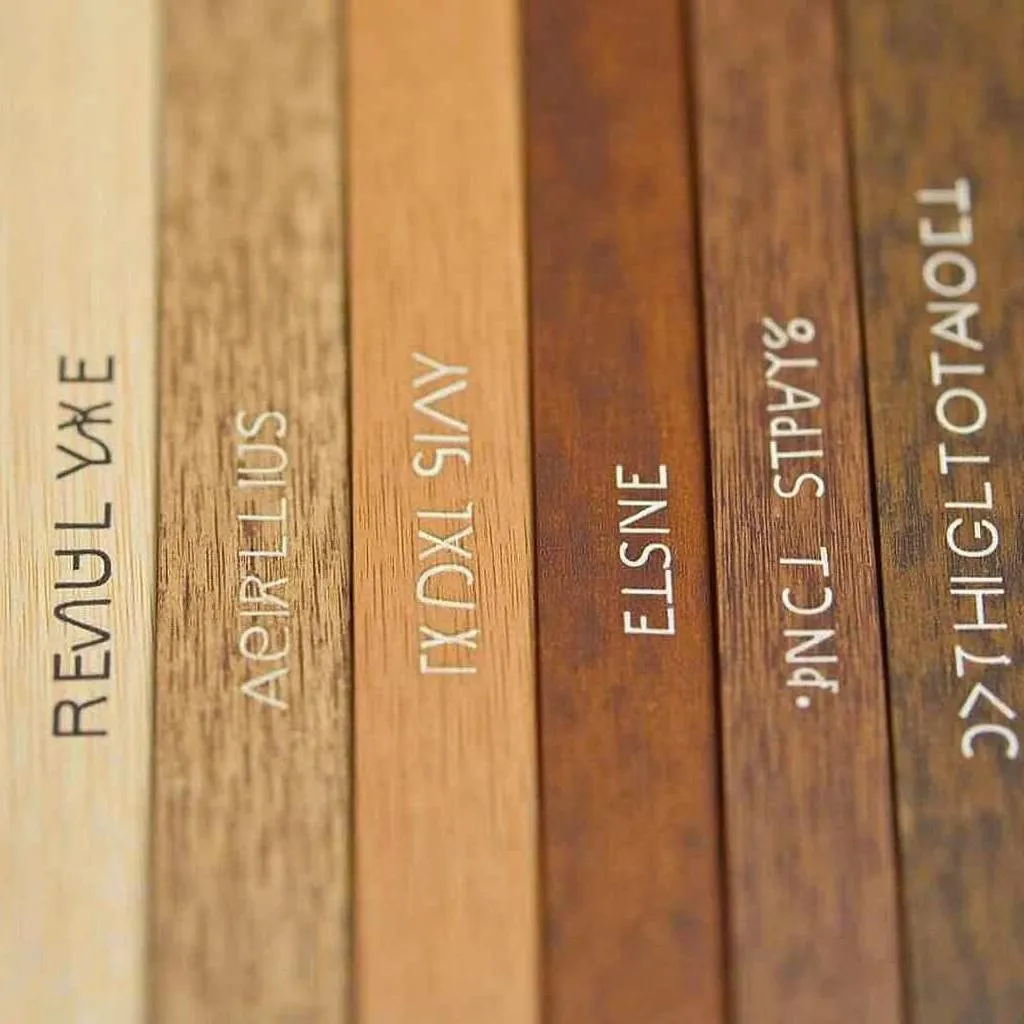Matching stain color can be tricky, especially when you’re trying to blend new wood with existing pieces or achieve a specific look. But don’t worry, with a little guidance, you can master the art of stain matching and create a harmonious and visually appealing finish. This comprehensive guide will equip you with the knowledge and techniques to confidently tackle any stain matching project.
 Matching Stain Colors on Wood Samples
Matching Stain Colors on Wood Samples
Understanding the Factors that Influence Stain Color
Before diving into the matching process, it’s crucial to understand the factors that influence how a stain color will appear on wood. Just like paint, wood stain comes in a variety of shades and finishes. However, unlike paint, the final color is greatly affected by the wood itself.
- Wood Species: Different wood species have unique grain patterns and natural colors that interact differently with stains. For instance, a stain applied to pine will look different on oak or cherry.
- Wood Porosity: The porosity of wood, or its ability to absorb liquids, significantly impacts stain absorption and color intensity. Open-pored woods like oak tend to absorb more stain, resulting in a darker color, while closed-pored woods like maple produce a lighter shade.
- Existing Finish: Matching stain to an existing finish can be challenging. The type and condition of the old finish, whether it’s varnish, polyurethane, or paint, will influence the final color.
- Application Technique: The method of applying the stain, whether by brush, rag, or spray, affects the stain’s penetration and overall appearance.
Effective Strategies for Stain Color Matching
Armed with an understanding of these influencing factors, let’s explore effective strategies to achieve a perfect stain match:
1. Start with a Test Patch:
Always test the stain on a hidden area of the wood or a scrap piece of the same species. This step allows you to see how the stain interacts with the wood’s unique characteristics and make adjustments before committing to the entire project.
 Testing Stain on Scrap Wood
Testing Stain on Scrap Wood
2. Consider Wood Filler and Putty:
If you’re working with new wood that needs to match existing pieces, use a wood filler or putty that closely resembles the final stain color. This will help create a seamless look and prevent the filler from standing out.
3. Explore Different Stain Types:
Experiment with different types of stains to achieve the desired color and opacity. Oil-based stains penetrate deeply, enhancing the wood’s natural beauty, while water-based stains offer easier cleanup and faster drying times.
4. Adjust Color with Mixing and Layering:
Don’t be afraid to mix different stain colors to create a custom shade. Start with small amounts and gradually add more until you achieve the desired result. Additionally, consider layering stains to add depth and richness to the finish.
Expert Tip from John Miller, Master Woodworker: “When layering stains, allow each coat to dry completely before applying the next. This ensures proper adhesion and prevents the colors from muddying.”
5. Utilize Natural Light:
Color perception can be deceptive under artificial lighting. Always assess the stain match in natural light to ensure accuracy. Natural light reveals the true undertones and nuances of both the stain and the wood.
6. Seek Professional Assistance:
If you’re struggling to find a perfect match or are dealing with a particularly challenging project, don’t hesitate to seek help from a professional paint and stain specialist. They can offer expert advice and custom color matching services to meet your specific needs.
 Professional Color Matching for Wood Stain
Professional Color Matching for Wood Stain
Conclusion
Matching stain color doesn’t have to be daunting. By understanding the factors that influence stain appearance, utilizing effective matching strategies, and following these expert tips, you can achieve professional-looking results. Remember, patience and experimentation are key. Embrace the process, and you’ll be well on your way to creating beautifully stained wood surfaces that enhance your home’s aesthetic appeal.
FAQs
Q: Can I stain over an existing finish?
A: It depends on the type and condition of the existing finish. If the finish is in good condition and compatible with the new stain, you may be able to stain over it after light sanding. However, it’s always best to test on a hidden area first.
Q: How long should I let the stain dry before applying a topcoat?
A: Drying times vary depending on the type of stain and environmental conditions. It’s best to refer to the manufacturer’s instructions for specific drying times.
Q: What is the best way to apply stain?
A: There are various methods for applying stain, including using a brush, rag, or sprayer. The best method depends on the project and personal preference.
Need more help with matching stain color? Contact us at Phone Number: 0373298888, Email: [email protected], or visit our store at 86 Cầu Giấy, Hà Nội. Our team of color experts is available 24/7 to provide personalized guidance and support. For more information on how to match stain color on wood specifically, check out our dedicated guide how to match stain color on wood. You can also explore related articles like how to restore color to leather furniture and how to change color of wood to expand your knowledge.

